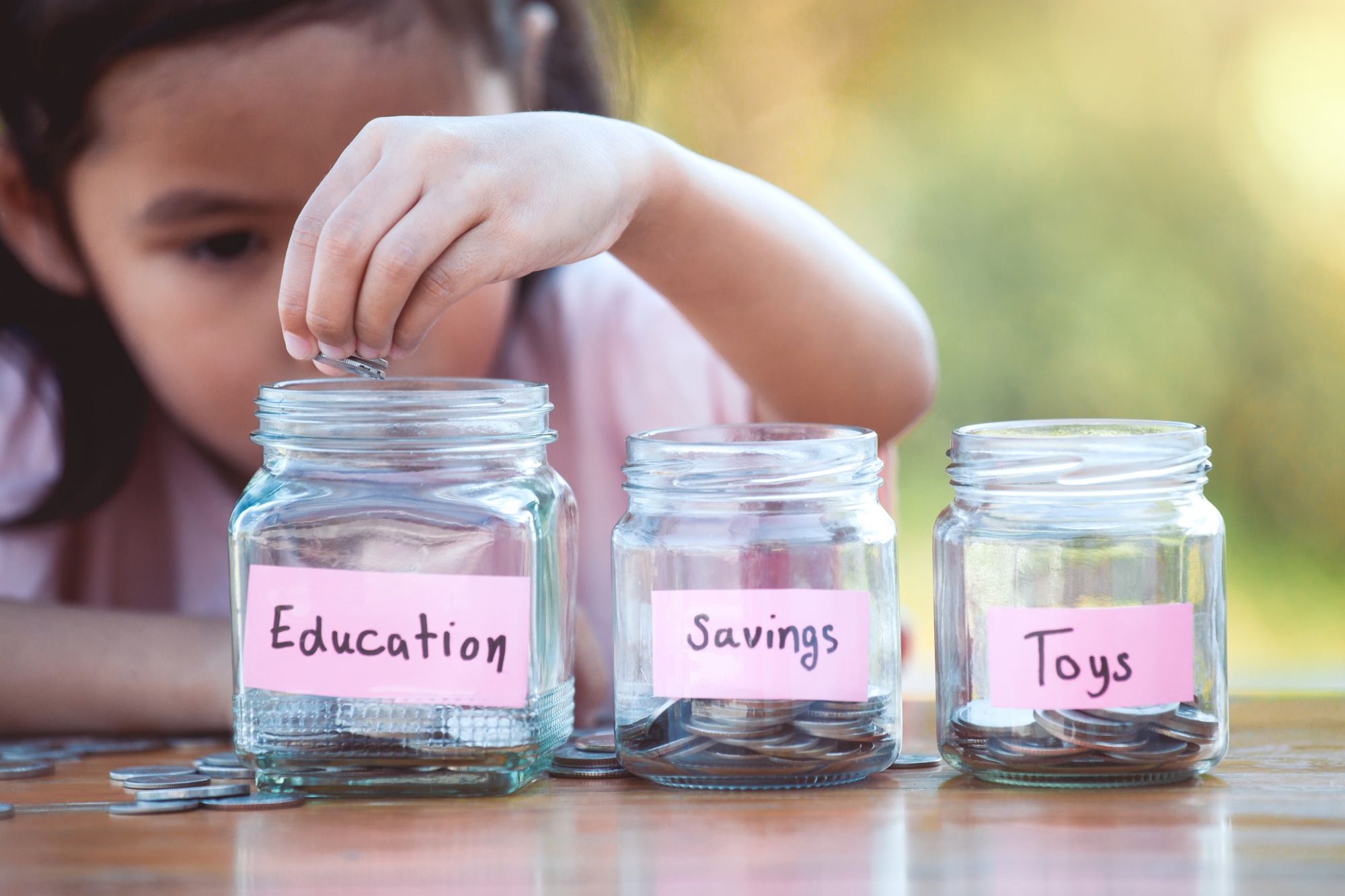“Mom, I need new earbuds!” “Can I have Golden Goose sneakers for my birthday?” “I need the new iPhone.” Does this sound like your kids? Any seasoned parent knows that kids have a short memory when they’re asking for stuff they want. It doesn’t matter how many times you say, “money doesn’t grow on trees,” they still don’t get it. And truthfully, it’s not their fault. Financial habits aren’t inherited, they’re passed on to children by watching their parent(s). The lessons they learn from us can be good or bad and can set a pattern for life. Because money is considered such a taboo topic, many parents feel uneasy discussing it. But an open, honest conversation is vital for teaching kids about money. Teaching your kids about money should be as basic to their upbringing as learning what’s right and wrong. Here are 5 things your kids need to know about debt in order to set them on the path for a secure financial future.
And make sure you check out my post on creating financial security as a woman.

#1 | Debt is a Big Deal
Many people throughout the country have accumulated debt in one form or another. Whether it’s a student loan, credit card debt, home mortgage, or car lease—seeing it so often might give kids the impression that borrowing isn’t a big deal. The real lesson for kids is that debt is an obligation that cannot be taken lightly. A promise to repay a debt is a serious matter and defaulting on a loan can have lasting personal and legal repercussions. Bill Fay from debt.org encourages parents to teach the concept of debt to younger children by advancing them small loans for things that they can’t afford.
Example Lesson
Leah wants to go to a concert with her friend. Leah’s mom will take them both if Leah can come up with $20 for the ticket. Leah only has $5 saved. Mom could loan Leah the $15 balance and require repayment of $1 a week until the loan is paid off. Missing a payment, however, will incur a penalty of 50 cents each week. In this way, Leah understands the consequence of going into debt. She learns about promising to repay according to a specific timetable. She’ll also learn that she’ll have to curb her expenses in the upcoming weeks if she intends to repay mom on time.

#2 | Saving Money is Cool
Most children start saving with a piggy bank, but they don’t really understand what all those coins are meant for. To truly teach a child about saving for their financial future, open a bank account. Once they have their own bank account, they begin to learn the value of having money available when they need it. Reviewing a monthly statement with kids—especially when they see a small interest payment—is the first tangible lesson in the time-value of money. It teaches a child that saving creates a reserve for future spending, and also puts money to work. Saving and earning interest generate an income with no effort from the account holder. As your child’s bank account grows, discuss what it means. Tell your child that financial reserves protect them against unforeseen financial hardships.
Budgeting
When your child is older and understands basic STEM math, it’s a good time to introduce budgeting. Discuss how your household divides income for different purposes. Some money goes into savings, some to pay the mortgage and car loan, other funds cover utilities and insurance. If there is money left over, it becomes discretionary spending on shopping, dining out, and vacations.

#3 | Good Debt vs. Bad Debt
In some cases, borrowing money puts you in a better financial position in the long run. Strategically taking on a little debt can actually make you more financially stable. For example, if your kids borrow money for a college education, the investment might mean they get a better job that will pay more after graduation. Using the same concept, a person can take a modest loan to start a business or buy a property to rent at a profit. This type of debt is “good,” meaning it has the potential to earn money over time. “Bad” debt involves acquiring things that won’t go up in value like cars and clothing. Teach your kids not to borrow for anything that won’t generate them more money, and that good debts are really investments.

#4 | The Credit Consequence
The next step is explaining to kids why lenders charge interest and why credit card interest rates are higher. Teach them the difference between an unsecured debt (like credit cards) or backed-by-collateral debt such as a mortgage. You might not be ready to give your younger child their own credit card, but they can watch you using yours. When the bills come in at the end of the month, let them look at your list of purchases. Have them help you match up your receipts to the statement. Explain why it’s better to pay off the full balance each month and explain the consequence of the interest charge for not doing so.

#5 | Teen Responsibilities
By the time your kids are teenagers, they will receive offers of credit from department stores, banks, and even their college. You can help your young adults learn to manage credit cards by having them sign up for a gas or department store credit card, with a low credit limit. You can also get them cards from your own credit account. My husband and I ordered cards for each of our teens in their name. Even though we’re paying the bill at the end of the month, they’re starting to build credit. Plus, the kids are learning (in a practical way) about watching their expenses each month. A great feature through our credit card company is a handy app that notifies us when one of the kids has made a purchase so that we can see in real-time what they’re spending.
Student Loans
Perhaps the most important conversation to have with your teens concerning debt will be about student loans. College has never been more expensive, and most families simply can’t afford it without borrowing money. Students need to understand how the different types of education loans vary, in terms of interest and repayment periods. They also need to grasp that student loan debt will most likely be their burden to repay, not mom and dad’s.
Knowing how to handle money, credit and debt are necessary skills kids need in order to take full advantage of financial success in adulthood. Do you have some personal financial advice that has worked for your family? Please share in the comments below!
To get blog posts delivered directly to your inbox, along with some awesome freebies, be sure to sign up for the newsletter here.
Thank you for reading!


















